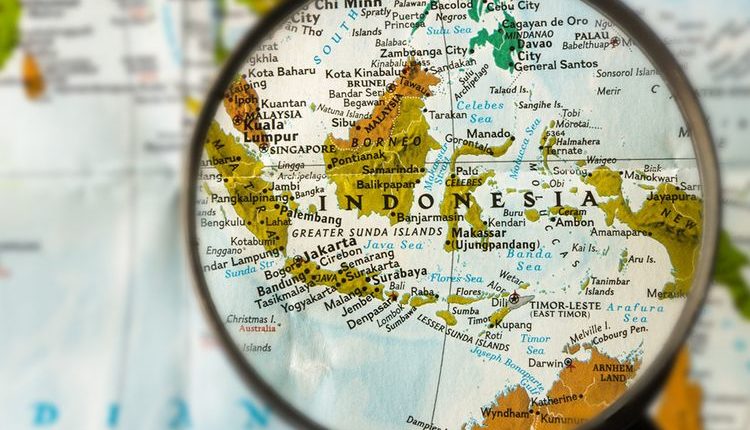Relocation of Capital City Implemented Social Justice
By: Abner Wanggai) *
The planned transfer of the National Capital (IKN) is increasingly felt real. The transfer was not only to stimulate a new center of economic growth, but also to fulfill the ideological aspect of the nation, namely social justice for the community.
Efforts to relocate a new capital is not new. The issue of moving the new capital has been around since President Soekarno until President SBY’s administration. Various regions are planned to become the location of a new capital city, but only become a discourse. It was only during the reign of President Jokowi that the capital transfer plan actually happened. The new capital will be built in the administrative region of North Penajam Paser Regency and Kutai Kartanegara Regency, East Kalimantan Province.
If you look at the historical context of Indonesia, the national capital of Indonesia once moved from Jakarta to Yogyakarta during the Dutch Military Aggression on September 29, 1945. On January 2, 1946 Sultan HB IX sent a courier to Jakarta and suggested that the capital of the Republic of Indonesia be moved to Yogyakarta so that on January 4 1946 Soekarno moves the country’s capital to Yogyakarta for the first time. After that there was the Dutch Military Aggression II on December 29, 1948 which resulted in the fall of Yogyakarta as the capital of the Republic of Indonesia to the Dutch. Time passed, after the Dutch aggression ended the national capital returned to Jakarta.
Of course the relocation of the new capital to the East Kalimantan region, which is partly in Penajam Paser Utara and partly in Kutai Kartanegara, is not a policy without prior studies, but through a series of in-depth studies related to the plan. The study is related to the economy, demography, social politics, defense and security, and so forth.
Looking at the geographical and population aspects, East Kalimantan according to BPS RI data as of 2018 has a number of villages of 156, with a population density of 105 inhabitants / square km (data as of March 2, 2017). The total population in 2010 was around 3,553,143 (as of July 9, 2012). The population growth rate as of November 21 2017 is at 2.58% with a Dependency Ratio in 2010-2030 of 44.5% in 2020. Data as of 2013, for plantations there were 116 companies in East Kalimantan with a total workforce of 39,414 people .
Socially and culturally, the population in Kutai Kartanegara is divided into indigenous people (consisting of eight tribes, namely the Benuaq Dayak, Tunjung Dayak, Bahau Dayak, Modang Dayak, Kenyah Dayak, Punan Dayak and Kayan Dayak) while the migrant population consists of seven tribes (seven tribes) Banjar, Javanese, Bugis, Mandar, Madura, Butonese and Timorese).
From a topographic perspective, the Kutai Kartanegara region is mostly bumpy and hilly with gentle slopes to steep slopes. Areas with flat to gentle slopes are found in several parts, namely coastal areas and Mahakam watersheds. In the interior and border areas are generally mountainous areas with elevations between 500 to 2,000 m above sea level.
Penajam Paser Utara Regency is the second youngest district in East Kalimantan born in 2002. PPU has four sub-districts, namely the Sub-Districts of Penajam, Waru, Babulu and Sepaku.
The issue of financing the transfer of the National Capital (IKN) requires a very large budget of around Rp 466 trillion. To facilitate such a large cost, the strategy undertaken by the government is to facilitate other countries that want to invest in developing IKN. Another alternative is to sell or lease state assets in Jakarta, such as government buildings.
Apart from the various problems and obstacles faced, of course the relocation of the capital city to Kalimantan is also considered to be the government’s solution in overcoming the various problems that have been faced.
The relocation of the new capital to Kalimantan, is considered to be the most free area from the threat of natural disasters. This is certainly inversely proportional to the current capital city. Call it the flood disaster that is a subscription every year. In addition, the vast vacant land in Kalimantan can be a solution to avoid high population density. Especially seeing the condition of the capital city now, whose population reaches 10 million.
Population density is certainly in line with the number of private vehicles entering the capital. This is the cause of congestion which has increased every year. Moving the new capital to Kalimantan could be the right solution to reduce congestion. The movement of the capital is expected to be followed by residents who move from Jakarta to the new capital, so as to reduce congestion and congestion.
Executive Director of the Indonesian Transportation Society (MTI) Deddy Herlambang said that in terms of transportation, there are four important things to be a vision going forward for safe, comfortable, safe and environmentally friendly transportation that can be applied in the new IKN later.
First is non-moterized transport for pedestrians and peseda. Included also are disabilities, the second is mass transportation such as electric rail trains, modes of transportation, special bus lines or the like. Third is shuttle transportation that can operate in malls, offices, or campuses that carry passengers to the terminal and the last is to increase feeder vehicles.
The relocation of the new capital city is also expected to encourage economic equality. Because, most of the economy is absorbed in Java. Economic equality will be in line with equitable development which is currently more centralized in Java.
Therefore, the relocation of a new capital city is expected to be a solution to overcome the problems that have occurred in the capital city. Of course, careful planning or strategies are needed in realizing this, so that the plan to relocate a new capital city can really be a solution, rather than adding to existing problems.
) * The author is a social political observer
